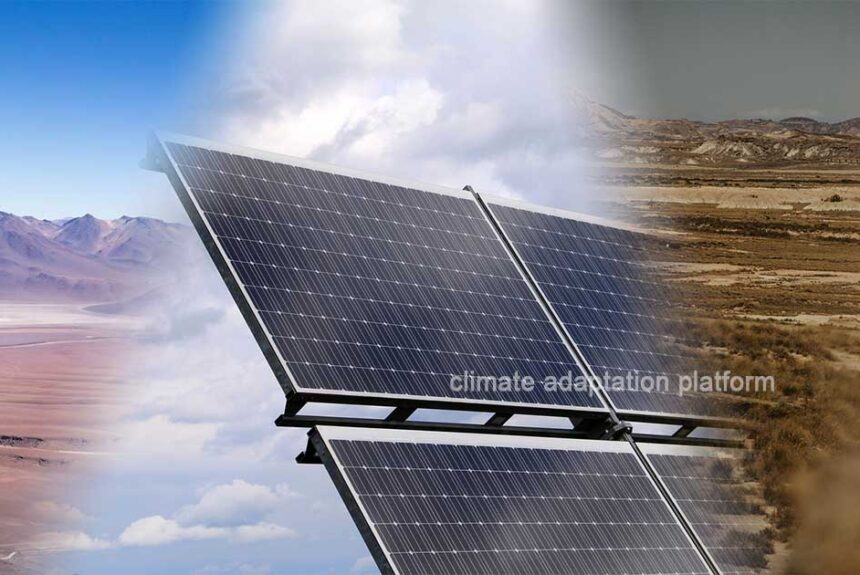The Gila River Indian Community (GRIC) has garnered attention with its groundbreaking installation of 3,000-foot-long solar panels situated over the Casa-Blanca canal. This project is notable for being the first of its kind in the Western Hemisphere.
Indigenous Peoples often face outsized challenges from climate change. For GRIC, this solar-over-canal initiative is a step toward cleaner energy and reduced dependence on fossil fuels, the leading driver of global warming.
The Solar-Over-Casa Blanca Canal Project, located 33 miles south of Phoenix, Arizona, serves a dual purpose:
- Generate clean, renewable energy
- Reduce water evaporation in the desert sun and wind
Energy Generation and Water Savings Potential
According to Dr. David H. DeJong, Director of the Pima-Maricopa Irrigation Project, the solar array is capable of generating up to 1.3 megawatts of power. Grants from the Inflation Reduction Act funded the project’s $5.6 million cost.
A five-year study is underway to gather data on the project’s effectiveness. Initial findings suggest the solar cover may reduce evaporative losses by 40% to 65%.
The canal itself spans over 250 miles. Covering just half of it with solar panels could produce more than enough electricity to meet the community’s needs—potentially opening up opportunities for carbon credit trading and selling excess power to outside entities.
Dr. DeJong notes that covering just 16 miles of the canal over 25 years could save 9,000 acre-feet of water. For context, one acre-foot equals 325,851 gallons—enough to supply a family of four for three years.
Given Arizona’s abundant sunshine and growing water stress, investing in solar panels over canals makes practical and ecological sense. It also eliminates the need to use additional land, aligning with the community’s values of sustainable resource use.
According to Inside Climate News, the panels began producing power in November 2024 for members of GRIC’s two tribes: the Akimel O’odham (Pima) and the Pee Posh.
Floating Solar Panels: Expanding Renewable Horizons
Just two months before the panels went online, GRIC also announced plans to install floating solar panels—known as floatovoltaics—on a new water reservoir. The goal is to fully power both the canal and the reservoir using solar energy.
This comes at a crucial moment, as the Colorado River, which provides water to seven U.S. states and 40 million people, faces crisis-level depletion due to drought, warming temperatures, and declining snowpack in the Rockies.
Between 2001 and 2015, Lake Mead’s water level fell by 121 feet. By February 2025, it had dropped even further, to 1,068 feet (The Colorado River, 2025).
While floating solar panels are not new—they were first deployed in 2007 in Napa County, California—they’ve matured slowly in the U.S. In contrast, according to Bloomberg, Asian countries now lead the world in floatovoltaic power, generating the majority of the global 13 gigawatts as of 2022.
Floatovoltaics offer two key benefits:
- Reduce evaporative water loss
- Maintain hydropower generation even during low water levels
Persistent drought conditions, climate change, and increased water demand are among the factors contributing to the shrinking of river basins and reservoirs in the United States. The Colorado River basin is an example.
The Colorado River Basin has suffered from drought throughout the 21st Century, driving the dangerously low water levels at the two major reservoirs it supplies, Lake Mead and Lake Powell. Lake Mead’s elevation has dropped by 121 feet between 2001 and 2015, from 1,196 to 1,075 feet. At the end of February 2025, water levels further declined to 1,068 (The Colorado River, 2025).
But how effective are floating solar panels in conserving water in reservoirs, and are they cost-effective solutions to combat water depletion while generating clean energy?
The Inside Climate News article presents study findings from the National Renewable Energy Laboratory (NREL), which has examined the merits and issues of floatavoltics.
A February 2025 NREL paper suggests that floating solar panels on federally owned dam reservoirs could power approximately 100 million US homes annually if all available space is utilised. For instance, Lake Powell could support nearly 15 gigawatts of solar energy with 23% of its surface area, while Lake Mead could generate over 17 gigawatts with 28% of its surface.
But the technology has its flaws.
According to a 2021 NREL report, solar arrays can be 20% more costly to install on water than on land due to the added expense of buoys that keep the panels afloat.
Additionally, a 2024 study from Cornell University found that floating solar panels covering more than 70% of a pond’s surface area increased the water’s CO2 and methane emissions. According to the researchers, these are the trade-offs that need to be considered before deploying solar panels on water rather than on land.
Another issue with floating solar panels, says Cole Bedford, the Colorado Water Conservation Board’s chief operating officer, is their presence on the reservoir “would diminish the recreational value such that it would not be appropriate”, and added that “On others, recreation, power generation, and water savings could be balanced.”
Sources:
GRIC’s ‘Solar Over Canal’ Project sets first Solar Panels. (2025, May 22). Gila River Indian News. Retrieved from https://www.gricnews.org/index.php/grin-articles/2024-articles/june-7-2024-articles/grics-solar-over-canal-project-sets-first-solar-panels
Bolster, J. (2025, June 1). Gila River Tribes Intend to Float Solar Panels on a Reservoir. Could the Technology Help the Colorado River? Inside Climate News. Retrieved from https://insideclimatenews.org/news/01062025/gila-river-tribes-floating-solar-could-help-colorado-river/
Gila River implements a unique solar project enhancing energy sovereignty. (2024, November 15). Indian Country Today. . Retrieved from https://www.youtube.com/watch?v=b4Mo8HdYZXk
Hadjimichael, A. (2025, March 19). The Colorado River crisis: Water shortages, climate change, and sustainable management. PennState Institute of Energy and the Environment. Retrieved from https://iee.psu.edu/news/blog/colorado-river-crisis-water-shortages-climate-change-and-sustainable-management#



Leave a Reply